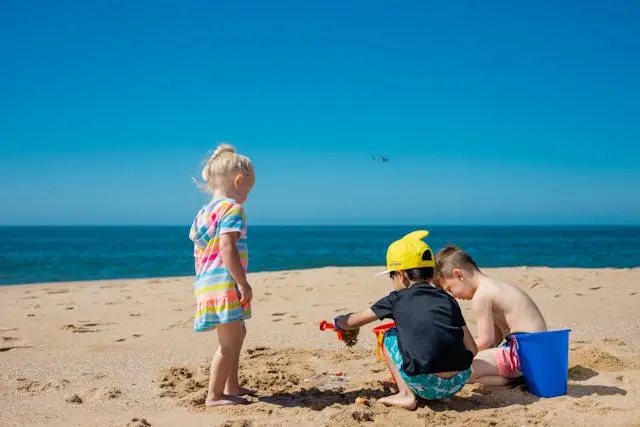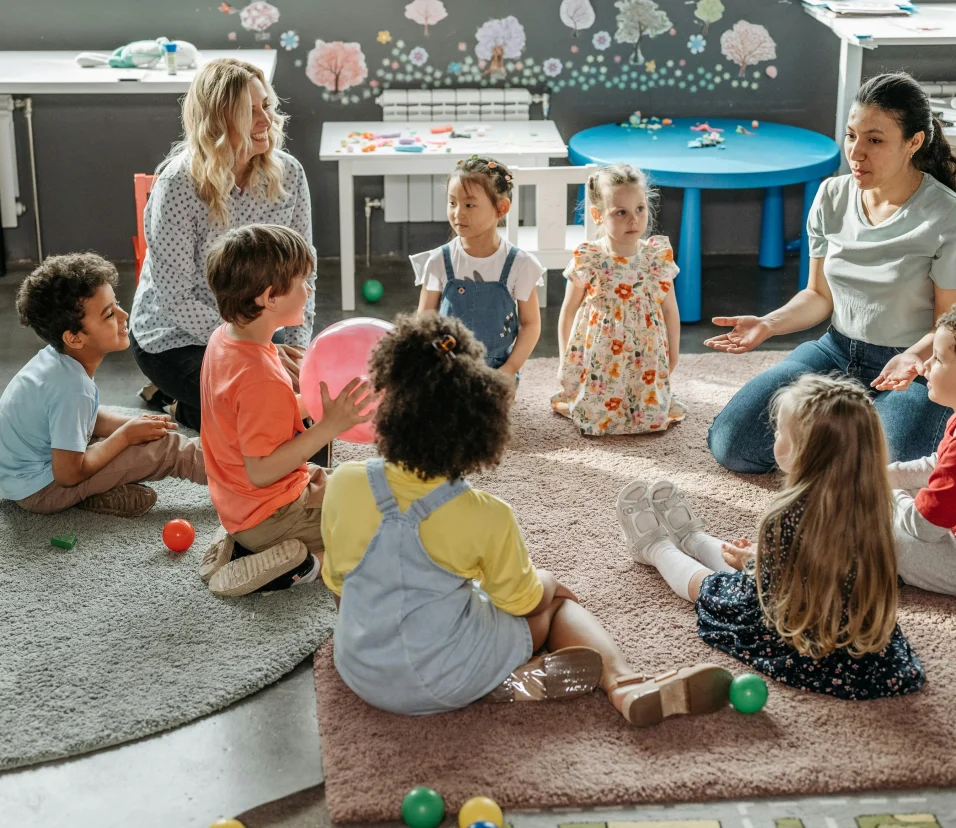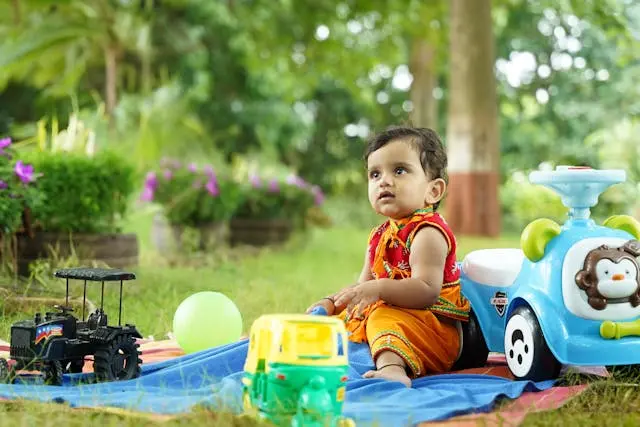Exploring Sensorial Activities for Preschoolers- Comprehensive Overview
A Day in the Preschool Classroom
As a preschool teacher, I often start my day by observing the children as they explore the various activity stations set up in the classroom. Today, I notice Jake and Lily at the sensory table, their little hands busy sifting through a bin of coloured rice. “Look, Miss Maryam!” Jake calls out, showing me a small toy car he has unearthed from the rice. This simple activity is more than just play; it’s a critical part of their learning and development, engaging their senses and sparking their curiosity.

Understanding Sensorial Activities
Definition and Importance of Sensorial Activities
Sensorial activities are designed to stimulate a child’s senses: touch, sight, sound, smell, taste, and movement. These activities are crucial for preschoolers as they help in developing cognitive, social, and emotional skills. Unlike general sensory play, which may focus on one or two senses, sensorial activities aim to provide a multi-sensory experience, enhancing the child’s overall learning process.
The Science Behind Sensorial Play
Sensorial play is backed by extensive research that highlights its impact on brain development. Activities that engage multiple senses can create stronger neural connections, enhancing memory, attention span, and problem-solving abilities. The Montessori method, for example, emphasises sensorial education to aid children in categorising and understanding their environment.
Types of Sensorial Activities for Preschoolers

Tactile Activities
Tactile activities involve the sense of touch, allowing children to explore different textures and materials. Examples include playing with playdough, sand, or water. These activities enhance fine motor skills, improve texture differentiation, and can be incredibly calming for children.
Example:
- Playdough Play: Give children different coloured and textured playdough to mould and shape. Adding tools like rollers and cutters can further enhance the experience.
Visual Activities
Visual activities stimulate the sense of sight and help children develop visual discrimination and pattern recognition skills. Examples include colour sorting games and using light tables.
Example:
- Colour Sorting: Provide a variety of objects in different colours and ask children to sort them into corresponding baskets. This activity not only teaches colours but also improves organisational skills.
Auditory Activities
Auditory activities focus on the sense of hearing, helping children develop auditory discrimination and listening skills. Examples include sound-matching games and playing musical instruments.
Example:
- Sound Matching: Fill small containers with different materials (rice, beans, coins) and ask children to shake them and match the sounds. This enhances their ability to distinguish between different sounds.
Olfactory Activities
Olfactory activities engage the sense of smell and can be linked to memory and emotion. Examples include using scented playdough or exploring spice jars.
Example:
- Scent Exploration: Provide small jars filled with various spices and scents. Allow children to smell each one and discuss what they remind them of. This activity can also introduce them to new vocabulary.
Gustatory Activities
Gustatory activities involve the sense of taste, expanding children’s palates and teaching them about different flavours. Examples include taste tests and cooking activities.
Example:
- Taste Test: Arrange a variety of fruits and vegetables and have children taste and describe them. This not only broadens their taste experiences but also encourages healthy eating habits.
Kinesthetic Activities
Kinesthetic activities focus on movement and body awareness, improving gross motor skills. Examples include obstacle courses and dance.
Example:
- Obstacle Course: Set up a simple obstacle course with cushions, tunnels, and balance beams. Encourage children to navigate through it, promoting physical coordination and confidence.
Implementing Sensorial Activities in Daily Routine
In the Classroom (Preschool Teacher’s POV)
As a preschool teacher, setting up a dedicated sensorial station in the classroom can make a significant difference. Incorporate sensorial activities into lesson plans to make learning more interactive and engaging. Managing a classroom during sensorial play requires clear guidelines and supervision to ensure safety and maximise the benefits of these activities.
Example:
- Sensorial Station Setup: Create a corner in the classroom with various sensorial materials, such as tactile boards, sound cylinders, and colour tablets. Rotate these materials regularly to maintain interest and provide new challenges.
At Home (Mother’s POV)
Sensorial activities can be seamlessly integrated into daily routines using household items at home. Creating a sensory-friendly environment involves ensuring plenty of opportunities for exploratory play while balancing screen time. Simple activities like sensory bins filled with rice or beans can keep children engaged for hours.
Example:
- Household Sensorial Activities: Use items like dried pasta, rice, or beans to create a sensory bin. Add small toys or objects for children to find and explore. This activity is cost-effective and easy to set up.
Benefits of Sensory Play

Cognitive Development
Sensorial activities enhance cognitive development by improving problem-solving skills, memory, and attention span. They provide a hands-on learning experience that helps children understand complex concepts through exploration and experimentation.
Social and Emotional Growth
Engaging in sensorial play encourages cooperative play and builds emotional resilience. Children learn to share, take turns, and communicate effectively during these activities. It also provides a safe outlet for expressing emotions and reducing anxiety.
Physical Development
Sensorial activities promote physical development by refining motor skills and encouraging overall health and well-being. Fine motor activities like threading beads improve hand-eye coordination, while gross motor activities like obstacle courses boost physical strength and coordination.
Tips for Successful Sensorial Play
Safety Considerations
When setting up sensorial activities, choose non-toxic, age-appropriate materials. Always supervise children during play to prevent accidents and ensure they are using the materials safely.
Example:
- Choosing Safe Materials: Opt for materials that are large enough to prevent choking hazards and avoid using items with small parts or sharp edges. Ensure that all materials are clean and safe for children to handle.
Engagement Strategies
To keep children engaged, rotate activities regularly and encourage them to explore at their own pace. Provide a variety of materials and experiences to maintain their interest and stimulate their curiosity.
Example:
- Activity Rotation: Change the materials in the sensory bin every week to introduce new textures and objects. This keeps the activity fresh and exciting for children.
Conclusion
Sensorial activities are essential for the holistic development of preschoolers, impacting their cognitive, social, emotional, and physical growth. By incorporating these activities into both classroom and home environments, we can provide children with valuable learning experiences that foster their natural curiosity and love for exploration.
Parents and teachers are encouraged to integrate more sensorial activities into their routines, creating enriching environments for children to thrive. For further reading and resources, explore educational websites, parenting blogs, and Montessori guides that offer a wealth of ideas and activities.
By understanding and implementing sensorial activities, we can nurture our preschoolers’ development in a fun and engaging way. So, let’s embrace the mess, encourage exploration, and watch our children grow and learn through the magic of sensorial play.









